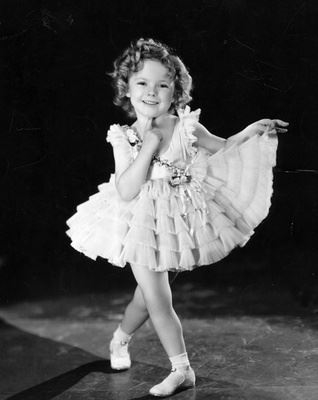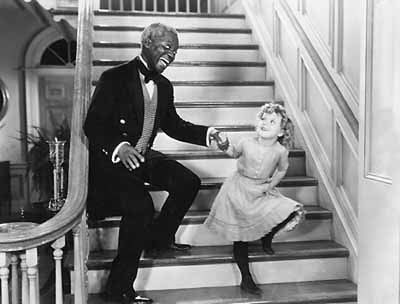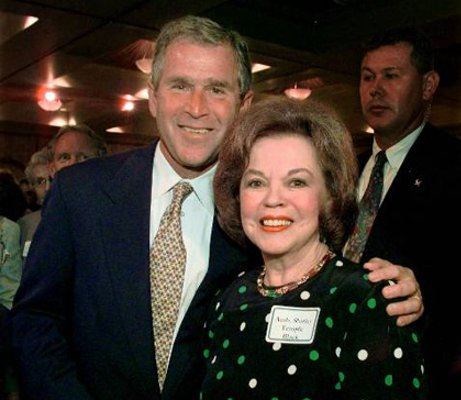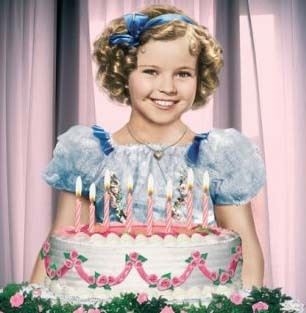 |
| The child star in her signature pose. (http://www.rieselisd.org/data/webs/History/1930/decade/shirley-temple.jpg) |
This bright young actress made America say “Aw how cute!” in the 1930’s with her charming persona as a child star. She ran for Congress in 1967 and she prevailed against breast cancer. Shirley Temple-Black managed to accomplish all of these things while keeping a smile on her face. Starting out as a famous child star, she moved on to have an honored career as a political figure. Between the years, she married twice and had three lovely children. Shirley Temple-Black defeated breast cancer, became a political ambassador and transformed the entertainment world forever. Shirley Temple-Black is a hero because she is courageous, determined and an inspiration to many.
Shirley Temple-Black was born in Santa Monica, California on April 23, 1928. Temple-Black’s mother, Gertrude, took her to her first dance lesson when she was only three years old. Baby Burlesque, a show that poked fun at the current box office hits, was Temple-Black’s first show. A year after the show concluded she attained a contract with Fox Studios. Shirley accomplished twenty films with Fox all before her sixth birthday. 1945 marked the year of Shirley Temple-Black’s marriage to John Agar. Sadly this marriage ended in 1949. Shortly after, she married her current husband Charles Black. She and Charles had two children together; she also had a child with John Agar. Shirley Temple-Black occupied her time with politics in the 1960’s and was diagnosed with breast cancer shortly after. Shirley Temple-Black went from a famous child actress to an influential politician all while overcoming a failed marriage and dealing with breast cancer.
 |
| Dancing with tap dancer Bill Robinson. (http://academic.brooklyn.cuny.edu/english/melani/cs6/shirley-bojangles400.jpg) |
In Temple-Black’s 1935 film The Little Colonel, she worked with tap dancer Bill Robinson, “Known for its memorable scene of the pair dancing on the stair case, the Little Colonel marked the appearance of the first interracial dance team in American motion picture history.” (Laska 2). Courageous enough to break the rules, Temple-Black became a hero to many. At seven, she was old enough to know that there shouldn’t be anything out of the ordinary with a white person dancing with an African American. Shirley Temple-Black proved that she could hold her own against many of the older actors of the time. As an adult, Temple became interested in politics, particularly “environmental and health issues” (Clifford). She bravely left the comfortable life she was living with her three kids and husband for a life in politics, where she felt she could do the most good. Shirley Temple not only revolutionized the entertainment world but she also was brave enough to revolutionize the world of politics.
 |
| Smiling with President Bush. (http://por-img.cimcontent.net/api/assets/bin-200905/527f6321a5a217e1cc53e121566a91a9.jpg) |
Although Politics isn’t exactly what Shirley Temple was known for, she greatly excelled in the field during the later years of her life. “Shirley arrived in New York in September, 1969 to take her seat at the U.N. as the only woman on the five-person American delegation. She was greeted with snickers, disbelief, and some resentment and derision.” ( website) Determined to make a difference, Shirley excelled even in the face of critics. She was determined to make a difference and she did. She held many government positions. “Richard Nixon appointed her United States representative to the United Nations in 1969; for Gerald Ford she was ambassador to the Republic of Ghana and later the first woman White House Chief of Protocol; for Ronald Reagan she served as a forgiven affairs officer with the State Department, and George Bush appointed her Ambassador to Czechoslovakia.” (Kennedy Center 2). At a point in her political career when she had gained acceptance and respect, she developed breast cancer. She put her political career on hold while she was battling it out with cancer. She picked up right where she left off when she recovered; determined as ever to keep serving her country.
 |
| Shirley Temple smiling with her birthday cake. (http://princessportal.com/blog/wp-content/uploads/2008/11/shirleytemple.jpg) |
Shirley Temple-Black overcame many difficulties in her life but overcoming breast cancer made her an inspiration to all women. After Shirley was diagnosed with cancer. In 1972 it was reported that, “the American Cancer Society reported a 30% increase in women seeking information on the detection of breast cancer.” (Laska 3). By sharing her story in the popular magazine McCalls, she brought awareness to a common but undiscussed cancer. She inspired many to get screened for breast cancer that might not have without her story. A nation was inspired by the young star. At the height of her career in the 1930’s the nation was experiencing the Great Depression and its aftermath. “President Roosevelt publicly praised her infectious optimism”. He announced; “that as long as our country has Shirley Temple, we will be all right.” (“Kennedy Center”). Shirley Temple-Black touched the hearts of millions of Americans, including the presidents, during some of the toughest times in America’s history. Temple-Black made people forget about their everyday problems, even if it was only for the length of a film. Shirley Temple-Black is a hero because she brings hope and inspiration all with a smile on her face.
Page created on 5/30/2010 12:00:00 AM
Last edited 5/30/2010 12:00:00 AM
